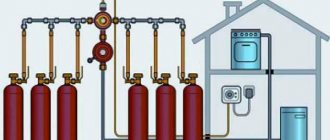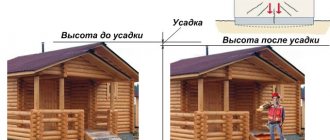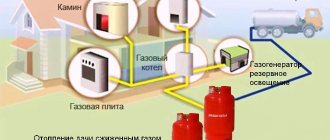The constant increase in the cost of utilities makes us think about reconsidering our views on methods of maintaining heat in winter, both in the country and in a country house. This issue needs to be approached comprehensively. You need to understand that economical heating does not mean cheap appliances and available resources. You can get a quality product only with a large investment. When choosing an economical electric boiler, gas, solid fuel or combined equipment, it is necessary to take into account their features, advantages and disadvantages.
general information
In the absence of gas supply, owners use other economical methods of heating their houses. Several alternatives are used. They differ radically in the organization of the system and in cost.
When choosing an economical method of heating a house, you need to rely on the following criteria:
- climate;
- maximum sub-zero temperature;
- budget.
Based on these parameters, a suitable economical option for providing heat in the house is selected. There are many effective heating methods. Here's some brief information about each of them.
Renewable heat sources
When calculating the costs in detail with heat pumps, wind turbines, solar collectors and batteries, the situation looks like this. They generate heat and electricity for a private home, but at first glance it is free. Of course, the sun and wind do not bill for heating, but such generation equipment is very expensive.
In Europe, renewable energy is sometimes subsidized from the state budget. Plus, the price tag for fossil fuels is frankly stinging. Therefore, “green technologies” there are economically justified and relatively effective.
In Russia the situation is radically different. Our state is not yet going to subsidize alternative energy. And prices for domestic firewood, coal and gas, compared to their neighbors in the west, are not so high.
As a result, based on the totality of all costs, it is difficult to call heat pumps, solar panels and wind turbines particularly economical. They generally show their effectiveness only in remote areas where it is difficult and expensive to deliver burned fuel.
Solid fuel boilers
One of the traditional and economical ways. The heating system is similar in design to the one with a gas boiler. It is distinguished by the installation of a heat generator that runs on solid fuel.
This method of economical home heating has the following features:
- fuel is added to the stove once a day;
- For long-term heating, choose equipment with a long-burning function.
Such models not only provide comfort, but are economical, as they slowly consume peat briquettes or ordinary firewood.
The most economical way is considered to be a pellet boiler. These are small wood pellets that the home owner pours into the tank. After that, they are fed in portions, using automation, into the boiler. Thanks to this, a person does not need to add fuel to the tank every day.
An additional feature of fuel tanks is the presence of a capital chimney. It is important not just to arrange such an element in the structure. It is required to periodically clean it of soot.
Heating using boilers requires wood or peat. Accordingly, this economical method is ideal for residents of those regions where the price for this type of fuel is acceptable.
Heating a house using solid fuels is inexpensive, but troublesome in terms of maintenance. If you buy equipment that does not support long-term combustion, you will have to heat it a little more often, the amount of wood spent will be decent.
Conclusions and recommendations
After conducting a comprehensive analysis, we can draw the following conclusions about choosing economical heating for a private home:
- Residents of the Russian Federation, whose houses are connected to gas mains, can continue to sleep peacefully - they cannot find a more economical method of heating. Unless you properly insulate your home in order to reduce fuel consumption. In the near future, natural gas will remain uncompetitive.
- The cheapest heating without mains gas is burning solid fuel. But for the sake of financial gain, you will have to sacrifice the time and effort spent on loading firewood and maintaining equipment. In this case, you should pay attention to long-burning solid fuel boilers and choose one of them.
- If you have financial capabilities, the best option for economical heating is a pellet boiler. If you have little space for storing pellets, then the issue can be resolved by periodically supplying pellets during the season, although the purchase cost will then increase.
- The best results in terms of efficiency are obtained by a combination of 2-3 energy carriers. For Russia, the most popular pair is solid fuel and electrics at a night rate. For Ukraine - electricity at night and natural gas during the day (including subsidies and without exceeding the limit of 3600 kW).
- You can only tolerate dirt and odors in the boiler room if you can get used oil inexpensively. Like diesel fuel, mining is not the best option for a residential building, unless you place the equipment in a separate building.
- Residents of the Russian Federation with above-average income can afford to heat their homes with liquefied gas for the sake of comfort. In Ukraine, this method is practically not considered as very uneconomical.
A combination of a wall-mounted gas and electric boiler, the second serves as a backup (night) source of heat.
At the moment, when energy prices tend to European ones, insulation of private houses is becoming increasingly important.
This is also a way to get economical heating, because with low heat losses it becomes possible to constantly use an electric boiler with a water heating system or local electric heaters, which is very convenient.
Heat pumps
This solution is widely used in Scandinavia, which is quite cold. Using a heat pump, you can provide autonomous and economical heating of your home. It requires electricity to operate.
Features of this home heating option:
- it is recommended to purchase and install a ground source heat pump;
- first, it is necessary to dig a trench on the site and lay pipes;
- thermal energy is released due to the difference in temperature of water passing through the pipes.
The efficiency of the soil pump does not depend on air temperature. You don't have to be afraid of severe frosts. In terms of cost, such a system is more expensive than most analogues. You can save on installation. An important advantage is the durability of the structure. A heat pump can operate normally for decades.
By installing a heat pump in a country house, you can get an autonomous, economical heating system. It requires a small amount of electricity to operate. And if you add solar batteries to the design, you will be able to partially not depend on electricity.
Reduced heat loss
It is impossible to choose a cheap heating method without investing in insulation and construction work.
It will not be possible to economically heat a house with electricity if the building does not have additional protection from the cold. 35% of heat loss occurs through the roof, 25% through the wall and up to 15% through the floor. These are big numbers that cannot be ignored. There are a large number of insulating materials and ways to use them.
You can use one of the following technologies for finishing the outside of a house or apartment:
- Wet facade. Insulation boards are glued to the wall, which are then nailed, reinforced, puttied and painted. Polystyrene foam, polystyrene foam or mineral wool are used.
- Ventilated facade. Here there is no direct contact with supporting structures. At a distance of 3-5 cm from them, a vertical structure is erected, consisting of a frame and basalt wool placed in it. On both sides the insulation is covered with a membrane film, and the outside is sheathed with a rigid finishing material.
- Fur coat made of polyurethane foam. The liquid is sprayed into a three-dimensional frame; after it hardens, it is covered with decorative slabs or panels. Today, polyurethane foam is considered the best insulation in all performance characteristics.
- Backfill. Expanded clay of fine and medium fractions is used to create a thermal insulation layer when arranging floors and ceilings. The material is inexpensive, but requires periodic replacement due to shrinkage and moisture absorption.
Even the most economical heating and insulation will not bring the desired effect if openings in the walls are ignored. It is necessary to install modern iron doors with internal filling and energy-saving double-glazed windows. They have a metal coating that traps heat inside the room and prevents cold from penetrating into it from the outside.
Electric boilers
A popular economical heating method. The system is simple and safe. During operation, no soot or gas appears, and there are no harmful emissions into the environment.
Features of this economical heating method:
- It is necessary to carefully and thoroughly think through and organize heating to ensure minimal energy consumption. Errors and failures will result in costs.
- The model and category of the boiler matters. In most cases, equipment with heating elements is used, which is inexpensive, but consumes a large amount of electricity. It is better to buy induction boilers. Here the bulk of the energy is spent on initial heating. After this, electricity consumption decreases.
Regardless of the type of boiler purchased, the owner receives a compact, easy-to-install device. There is no need to install a chimney. But a separate room is allocated to house the heating system, since electric boilers make noise during operation.
The use of electric boilers is an inexpensive and easy-to-install solution, an additional economical heating method. But, if the electricity supply is periodically cut off in the village, you should not use this option. There is a risk of being left in the cold without heating.
The main condition for economy
And it is probably necessary to start with that condition, without which all further presentation simply loses all meaning. That is, without which any heating system obviously cannot be classified to any degree of efficiency.
We are, of course, talking about maximally blocking the paths for heat leakage from the house. Or – about a well-thought-out, calculated and correctly executed thermal insulation system for a building.
In nature, everything strives for harmony and balance. And if a heated object suddenly appears against the general “cold background”, no matter what, then heat exchange processes are activated, trying to quickly level out the difference in temperature and bring it to one general level. This also applies to any home - without an insulation system, the temperature inside will tend to drop to the street temperature, and the only barrier to this will be the building envelope. Which, by the way, in most cases do not have the most outstanding resistance to this heat transfer. In a word, heat will actively go outside - for this there are several “traditional” directions. And the volume of heat leaks (heat loss) will depend on the location and features of the structure, its contact area with the external environment, the material of manufacture and the presence of thermal insulation qualities.
This is not all, but the main ways of heat loss in a residential building.
1 - Heat loss through the ceiling of the first floor, foundation, basement, basement. These leaks, by the way, are not so large against the general background - partly due to the fact that heat still tends to rise. So, this part of the house accounts for 10 to 15% of the total heat loss.
2 - The external walls of the building, due to their large area, become one of the main routes for heat leakage. They account for up to a third (up to 35%) of losses.
3 - Windows and doors are a special issue, since much depends on their type, quality of manufacture and installation, and operating mode (how often they are opened). But in total we can talk about losses of 15÷25%.
4 - A very problematic place is always the attic floor or roof (depending on the specifics of the building). They are natural barriers to the upward flow of heat, and with insufficient thermal insulation, losses here reach 20–25% of the total volume, and sometimes even more.
5 - Literally, the “highway” for heat release (up to 30÷40%!) can be the ventilation system (and without it, there’s no way) and chimneys (if there are any). Here, of course, the problem is solved not by thermal insulation, but somewhat differently - by air recovery, proper operation of furnace devices or structures, the presence of a valve system, etc. But forgetting about this is unacceptable!
Why does the author place such emphasis on all this? The reason is obvious - there is no point in talking about energy savings if heat leakage paths are ignored.
There are special methods for calculating heat losses, taking into account the specifics of the building and the climatic conditions of the region of residence. And the design of a heating system is precisely based on these calculations, which show how much heat this system must replace.
Moreover, modern electronic equipment allows one to personally recognize vulnerabilities in thermal insulation. It is enough to inspect the building from the outside in winter using a thermal imager - “holes” are immediately detected, through which the heat quickly escapes to the street.
Thermal imaging examination helps to find gaps in thermal insulation - it is clearly noticeable that heat literally radiates through such areas into the street.
Leaving it as it is is literally trying to “heat the street” with a obviously predictable result. And in this case, the choice of heating system does not matter much, since a priori it will be extremely uneconomical and unprofitable, regardless of the energy source used - even if the energy carrier is practically free.
That is, only then, after completely eliminating or, where this is not possible, minimizing heat losses, will it be justified to search for the most economical home heating system for your conditions. It is for such equal conditions that we will consider options.
By the way, in general terms, but with a fairly high degree of accuracy, the algorithm proposed on the pages of our portal allows us to calculate the predicted amount of heat losses for individual rooms and for the entire house (apartment) as a whole. Essentially, this gives the calculated thermal output of the heating system. And since this calculation, by its structure, takes into account the most unfavorable conditions (which, if they occur during the winter, do so infrequently and not for long), the resulting values of thermal power can be considered guaranteed to be sufficient to replenish heat losses.
If you want to more thoroughly evaluate your future heating system, we recommend that you follow the link and first calculate the required power of the system. It will be mentioned more than once below.
Is it possible to independently calculate the power of the heating system for your home?
Yes, this is possible - and with quite acceptable accuracy of the final result. Go to the publication on our portal dedicated to heating boilers - in the appendix there is a brief description of the algorithm and a convenient online calculator with the necessary explanations.
By the way, based on the power indicators obtained as a result of these calculations, the final heating devices are selected for specific rooms. For example, in the future you can select the desired radiator model, calculate the number of sections for dismountable batteries, the length of the “warm floor” circuits, etc. So it is best to save the compiled table with the values of thermal power for each of the heated rooms - the owners will need it more than once.
* * * * * * *
Now - directly to the topic of our publication. And the next question will be the cost-effectiveness of using various energy sources. To “bring it to a common denominator”, priority will be given to heating systems with liquid coolant, as the most popular and widespread. That is, when we talk about, say, solid fuel, we do not mean ordinary direct heating stoves, but boiler equipment that serves the entire house. It’s the same with electricity – not individual heating devices placed in rooms, but an entire heating system with a central heat generator powered by electricity.
Below will be presented a table of a kind of “rating” of efficiency - in the opinion of the author of these lines. Let no one be misled by the total scores - these are completely arbitrary evaluation criteria. That is, they do not actually show the level of efficiency - here, in addition to the cost of energy, they include issues of creating a heating system, delivery and storage of fuel, ease of use, safety and others. Buttons in each row of the table will immediately take the reader to a more detailed consideration of the advantages and disadvantages of a particular energy carrier.
Perhaps some issues seem controversial - I will be glad to receive comments in the comments to the article.
Solar panels
This economical way to heat a room is the most innovative. The owner receives autonomy regardless of utilities.
There are few disadvantages. They are directly related to the climatic conditions in the region of residence. Such an economical heating method can provide a building with heat only in the south of the country, where the sun shines most of the time, and in winter there is a slight cooling.
In the central climate zone of Russia, the returns from using solar panels are decreasing. They can only be used as an additional source of heat. It will provide the house with approximately 50% heat. In addition, solar collectors themselves are expensive, ranging from $500 to $1,000 per unit. And to obtain the optimal amount of thermal energy, several such batteries are needed. You will also have to spend money on installation. But it's not worth saving. Thanks to professionals, you can avoid problems during installation and operation, and not damage expensive equipment.
Batteries can heat water to a maximum of 60 degrees. To increase efficiency in this regard, it is recommended to add a circulation pump to the system. At the same time, the storage tank should be changed periodically, and this is an extra expense that cannot be avoided. Due to this, the method ceases to be the most economical.
Batteries are suitable as an additional heating method. With them you can reduce heating costs, nothing more.
Heating the house with electricity. The most economical way for you
All explanations about savings will be considered using the example of a two-story house, which has an area of 100 m2.
- Calculation of the cubic capacity of the room. Having 100 squares, you need to multiply them by the ceiling height, for example, 2.7 meters, you get 270 m3. This building has average insulation, which means that it is necessary to add another 10 percent to the capacity. Gathering the parameters together, the following result is obtained (270/20) + 10% = 15 kW
- Purchase of equipment. Pipes, taps, fittings, radiators and other nonsense will cost about 30,000 rubles. As for the boiler, assuming that there is no 380V in the house, it is recommended to purchase two electrode boilers, each with a power of 7 kW. The cost of one is on average 15,000 rubles.
- Management of the entire system. You'll have to buy an electronic controller, completely stuffed. Planning the boiler operation schedule for a week in advance, adjusting the boiler temperature depending on the weather outside and many other necessary functions. The cost of this miracle of technology is about 10,000 rubles.
- Installation costs. Depending on the region of residence, the cost varies, but on average it is 30 percent of the cost of the entire system.
- Additional, but not mandatory, power supply. Solar panels with a power of 3 kW will cost you 80,000 rubles.
What happened in the end? The total cost without solar panels is 70,000 rubles. Power consumption is 14 kW/hour, per day of operation of two boilers at an outside temperature of -10, consumption will be about 90 kW/day. The cost of a kilowatt of light is 5.38 rubles, which means 90×5.38×30=14526 rubles per month. If we count with installed solar panels, then the amount of expenses will be 11,500 rubles.
This is one of hundreds of options for arranging your home with heating; it’s up to you to choose.
Diesel boilers
This economical method is suitable for residents of those regions where inexpensive diesel fuel is available. Using a diesel boiler, you can heat buildings even in harsh winter conditions.
Features of this economical method:
- diesel boilers are expensive equipment;
- professional installation required;
- you need to allocate a separate room;
- installation must be carried out in accordance with safety conditions;
- Boilers require annual maintenance to ensure they remain efficient.
The system operates in a similar way to a car engine equipped with injection. As soon as the fuel supply is disrupted, heating costs automatically increase. Heating efficiency decreases.
An additional disadvantage is that the boiler pollutes the environment. This is comparable to the situation when a diesel truck is constantly operating on the site. The noise indicators from the diesel fuel boiler and from the operation of the burner are also significant.
The method is considered economical, but quite uncomfortable. If you correctly design a heating system using diesel boilers, the cost of heating will be comparable to using natural gas. If you make mistakes, heating costs will increase.
Steam boiler - what is it, features and principle of operation, where is it used? About all this in the link.
How to reduce heating costs and increase efficiency
Want to know how to make cheap heating? To do this, it is not enough just to buy an economical electric heater and install it in the house; you need to properly insulate the building. Significant heat loss from the room through the building envelope can cause you to be disappointed in its performance after purchasing the most efficient and economical electric heater.
Any gaps, cracks or holes in the flow or around windows and doors will help the room cool down quickly. Also, the reason for this may lie in leaky windows or in the absence of insulation in the wall structure. With high-quality insulation of the house, the heating efficiency indicator reaches 80%.
Be sure to install automatic heating control systems. So, if there is no one in the house during the day, it is better to configure the equipment so that it automatically turns on for heating a couple of hours before your arrival. As a result, you will walk into a warm home, but at the same time save on heating costs.
It is equally important to correctly calculate the power of heating equipment and select suitable locations for their installation. Be sure to install a two-tariff meter and configure the devices so that they operate at full capacity at night, when electricity is cheapest
LPG boilers
In terms of efficiency, this method of economically heating homes is better than using natural gas. But you need to take into account the nuances. It was they who prevented liquefied gas from becoming in demand as an economical heating method:
- For storage, a container is purchased - a gas holder. The larger its volume, the less often you need to order gas delivery.
- The tank is buried in the ground, which can cause difficulties due to the size of the tank.
- You will have to select a location not only based on the characteristics of the soil for digging, but also on the possibility of access by a refueling vehicle.
The costs here are high, because the gas tank is expensive. But this economical method is popular. Once the purchased installations pay off, monthly financial expenses for heating the house will be slightly inferior to natural gas.
Full autonomy. The owner must initially enter the appropriate settings. From now on, everything will function without human guidance. The main thing is to replenish the container with liquefied fuel in a timely manner.
Liquefied gas is an alternative to natural gas. If you have the financial opportunity, it is worth purchasing components and carrying out installation in accordance with the requirements. As a result, you can get affordable, safe heating of a country house.
The cheaper way to heat a house in Ukraine
Due to the increase in the price of firewood in 2021, the overall picture of the cost of heating in Ukraine looks very interesting. The layout is reflected in a similar calculation table:
Note. Electricity tariffs are indicated based on 2 conditions: the home has electric heating according to all the rules and energy consumption does not exceed 3000 kW/h per month.
The first place in terms of cheapness of heating in Ukraine is still occupied by dry firewood and electricity used at night. But due to the rise in price, their cost has practically become equal to the price of natural gas, which has fallen in price by 5...10% (in the current conditions it is not easy to announce the exact figure?).
Please also take into account this point: the 2021 table shows average fuel prices. Pellets and briquettes of poorer quality can be bought cheaper, and electricity and gas cost the same everywhere. So, energy resources are arranged in the following order (from cheap to expensive):
- electricity at night tariff;
- main gas;
- dried firewood;
- pellets, sawdust briquettes;
- freshly cut wood;
- used oil;
- anthracite coal;
- electricity at a daily rate (for consumption up to 3600 kW/month);
- liquefied gas;
- diesel fuel.
It is impossible to predict the size of gas and electricity tariffs in Ukraine due to the unstable economic situation. It is unlikely that energy resources will become significantly cheaper; subsidy payments are decreasing annually.
On the issue of supplying main gas, Ukrainians are in the same position as Russians, whose houses are not connected to gas pipelines due to the high cost of the service. Both have to burn different types of solid fuel or use electricity at night.
Prices: summary table
| Manufacturer and model | Type of fuel | Power, kWt | Efficiency, % | Gas consumption, m3/hour | Cost, rub. |
| Teplodar Cooper Praktik 8 | Firewood, coal, peat, pellets | 8 | — | — | 16 100 |
| NMK Sibir KVO 10 TPE | Firewood, wood briquettes | 10 | — | — | 23 000 |
| Protherm Wolf 12 KSO | Gas | 12 | 92,5 | 1,5 | 21 300 |
| Lemax Premium-10 | Gas | 10 | 90 | 1,2 | 21 000 |
| HEPHAESTUS VPR KSG-10 | Gas | 12 | 85 | 0,7 | 17 100 |
Gas boilersBoilersWays to save Solid fuel boilers
ECONOMICAL is... What is ECONOMICAL?
- economical - economical, thrifty, break-even, economic, profitable, economic Dictionary of Russian synonyms. economical economical, profitable Dictionary of synonyms of the Russian language. Practical guide. M.: Russian language. Z. E. Alexandrova. 2011 ... Dictionary of synonyms
- ECONOMICAL - ECONOMICAL, oh, oh; chen, chna. Giving the opportunity that n. save, profitable. E. processing method. Ozhegov's explanatory dictionary. S.I. Ozhegov, N.Yu. Shvedova. 1949 1992 ... Ozhegov's Explanatory Dictionary
- economical - oh, oh. économique adj. Economically profitable, making it possible for n. save. This soap is very economical and requires little use. Ush. 1940. Economical machine, method, materials. BAS 1. Economical, adv. controlled it... ... Historical Dictionary of Gallicisms of the Russian Language
- economical - cost-effective effective in cost - [L.G. Sumenko. English-Russian dictionary on information technology. M.: State Enterprise TsNIIS, 2003.] Topics information technology in general Synonyms cost-effective cost-effective ... Technical Translator's Directory
- economical - • amazingly economical • terribly economical ... Dictionary of Russian Idioms
- Economical - adj. 1. ratio with noun saving I 1., associated with it 2. Making it possible to save something; economical 4.. Ephraim's explanatory dictionary. T. F. Efremova. 2000 ... Modern explanatory dictionary of the Russian language by Efremova
- economical - economical, economical, economical, economical, economical, economical, economical, economical, economical, economical, economical, economical, economical, economical, economical, economical, economical, economical, ... ... Forms of words
- economical - economical; briefly form chen, chna ... Russian spelling dictionary
- economical - cr.f. economic/chen, economic/chna, chno, chna; save/more... Russian Spelling Dictionary
- economical - Syn: economical, thrifty ... Thesaurus of Russian business vocabulary
dic.academic.ru
Why electric heaters?
You will immediately ask yourself why classic water or stove heating of rooms is not considered? The answer is simple - this is due to the fact that installation work and maintenance for approximately the same money will be reduced to a minimum.
Now we will provide several reasons why it is obvious that the best and most economical heating system for a private home is electric.
- Electric heaters are silent, do not require additional resources (coal, firewood, liquid fuel) and do not pollute the atmosphere. This means that in a private house there is no need to have space in the utility room for fuel, make a chimney, and also remove soot every year. All you need to do is connect the system to the network and enjoy the warmth.
- Installing an entire electric heating system does not require a huge upfront cash investment. For example, installation of a water heating main is carried out once. A project is created, all pipes, radiators, a boiler, as well as additional automation are purchased. You will not be able to complete part of the work (for example, in one room), and if you have money, you will not be able to complete the project over time, and if you succeed, many problems will arise. It will be necessary to drain the water, cut into the finished highway, etc. In the case of electric heaters, everything is much simpler. You can install equipment in each room separately as you earn money. At the end of spring, buy convectors for the bedroom, later - for the kitchen, bathroom, etc.
- Today there are many ways to save on energy consumption. Of course, this option requires considerable expenses, but rest assured, over time they will pay for themselves. The installation of economical two-tariff meters, as well as solar panels on the roof of the house, is popular.
- You can connect a boiler, boiler or even a convector yourself, significantly saving money on calling a technician.
As you can see, electric heating in a private home really outperforms alternative options, so installing such a system is quite profitable.
Homemade economical electric battery heating system











